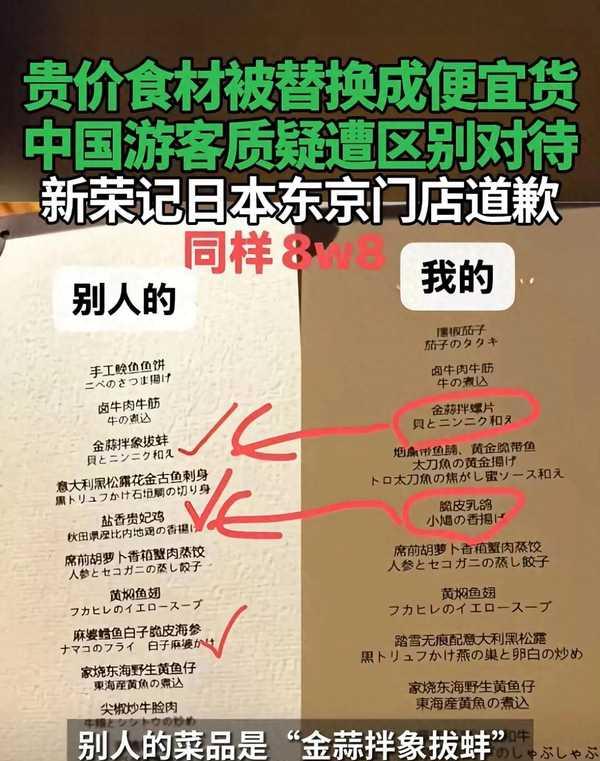Toxic Menu Controversy at Tokyo Xinyongji Restaurant
A customer accused Tokyo’s Xinyongji restaurant of discriminatory pricing after finding significant menu differences between Chinese and Japanese diners for the same 19,000 yen set meal. Further investigation revealed this was likely a seasonal menu change.

A recent controversy surrounding Tokyo’s prestigious Xinyongji restaurant highlights the complex dynamics of cross-cultural dining experiences and menu pricing in Japan’s high-end restaurant scene.
The incident began when a Chinese diner shared their experience at Xinyongji, claiming discrimination after noticing apparent differences between their menu and those served to Japanese customers. The diner’s 19,000 yen (approximately $900) set meal allegedly featured different ingredients compared to neighboring tables.
However, detailed analysis of the menus and pricing suggests a more nuanced situation. The apparent discrepancies likely stemmed from seasonal menu adjustments rather than discriminatory practices. Both menus maintained equivalent price points and similar luxury ingredients, though prepared differently.
Several key factors support this interpretation. First, the restaurant’s core menu items remained consistent across both versions, including their signature yellow croaker dish and premium beef selections. Second, the pricing structure stayed uniform regardless of the diner’s nationality. Third, seasonal availability of ingredients in Japan often necessitates menu modifications.
The restaurant’s management explained certain differences, such as the rice serving variations, as accommodations for traditional Japanese dining customs rather than discrimination. This cultural context is important - in Japan, rice traditionally serves as the final course in formal dining.
This incident sparked broader discussions about pricing transparency and cultural expectations in high-end dining establishments. While the original allegations of discrimination garnered significant attention, subsequent investigation suggests the differences reflected normal seasonal menu evolution rather than discriminatory practices.
The case underscores the importance of clear communication in cross-cultural dining settings, particularly regarding menu changes and cultural dining customs. It also highlights how misunderstandings can arise when different cultural expectations intersect in international dining environments.